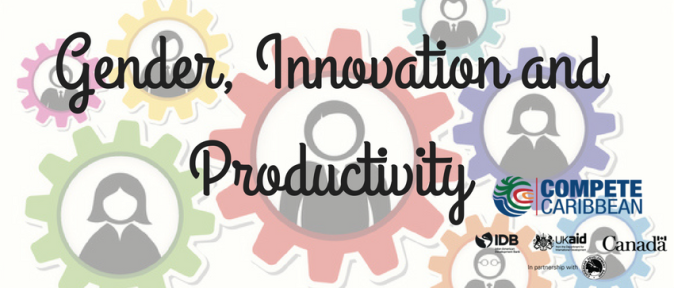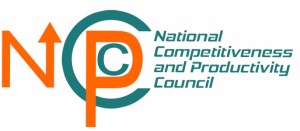The Eastern Caribbean Supreme Court, in collaboration with the Government of Saint Lucia through the National Competitiveness and Productivity Council hosted the Inauguration of the Commercial Division of the High Court at the Queen Elizabeth Port, La Place Carenage on Tuesday, January , 2016.
The establishment of the Commercial Division of the High Court was facilitated and coordinated by the National Competitiveness and Productivity Council (NCPC) on behalf of the Government of Saint Lucia. The NCPC together with the Ministry of Legal Affairs partnered with the Eastern Caribbean Supreme Court for the successful establishment of the Commercial Division.
(Please see full text of the feature address from Hon Kenny D Anthony, Prime Minister and Minister of Finance)
“DEALING WITH THE BUSINESS OF THE COURTS”
INTRODUCTION
Today marks an important occasion in our history as we all gather here for the official inauguration of the Commercial Division of the High Court. This has been a much anticipated event for this Government since the announcement for the establishment of a Commercial Division was made approximately three years ago. The dedication and commitment that was exhibited in order to bring this initiative about is commendable. This division would not have existed without key partnerships and stakeholders working together. I would therefore like to take a moment to acknowledge two of these key partnerships.
PARTNERSHIP WITH THE E.C.S.C.
First of all, I must thank the Eastern Caribbean Supreme Court (ECSC) for working with the Government of Saint Lucia to establish this Court. The ECSC was instrumental in providing the oversight, advice and direction for this initiative to ensure that the Commercial Division was established according to the standards that are expected across the region.
PARTNERSHIP WITH COMPETE CARIBBEAN
Secondly, I single out the partnership with Compete Caribbean. The Government has benefitted tremendously from its partnership with Compete Caribbean. Since 2012, after the signing of the grant agreement, Compete Caribbean has assisted the Government in the establishment of the National Competitiveness and Productivity Council (NCPC) with the mandate to enhance productivity and competitiveness. As part of that same technical assistance grant, it was agreed that the establishment of the Commercial Division would be coordinated through the newly formed NCPC on behalf of the Government of Saint Lucia.
Let me take the opportunity to thank Compete Caribbean for the continued support provided to Saint Lucia. I would also like to thank the hard working staff of the NCPC Secretariat.
From the partnership with Compete Caribbean, we had the support of a team of consultants led by Retired Justice Michael Gordon who lent invaluable assistance to the NCPC during the coordination of this project. Justice Gordon was instrumental in advising on the legal requirements to operationalize the Commercial Division of the High Court.
BENEFITS OF HAVING A COMMERCIAL DIVISION
Some have doubted the potential benefits of the commercial Division of the High Court. I wish to emphasize that every part of the legal system is important and the Government is committed to providing resources to the various components of the legal system within the context of its resource constraints. Having said this, there are several reasons and benefits of having a Commercial Division of the High Court.
It is expected that a specialised Commercial Division will ease the burden on the Civil Division of the High Court and will result in quicker resolutions to commercial disputes. Hopefully, this will improve the efficiency of the judicial system.
There are certainly other benefits of a specialised commercial division.
INCREASING COMPETITIVENESS
One is increasing competitiveness of Saint Lucia. I define competitiveness as the key set of factors, institutions and activities that enable a country to offer services and products to sustain itself among its competitors and to earn a high level of income. Therefore, to increase competitiveness it is essential to establish critical institutions to provide support services to businesses and other sectors of the economy. It is expected that the Commercial Division will provide an important service to the private sector by facilitating quick and effective resolutions of business disputes.
IMPORTANT TO ENTREPRENEURS
Secondly, the legal system is important to entrepreneurs. A Commercial Court is necessary to interpret the rules of the business environment and protecting the rights of businessmen and women. An efficient and transparent court system encourages new business relationships and expansion because businesses know that they can rely on the court for redress, should legal proceedings become unavoidable.
GREATER RESPECT FOR CONTRACTUAL OBLIGATIONS
Curiously, an unintended benefit of establishing this court may well be greater respect for contractual obligations among the citizens.
Thousands of contracts are entered into every day. Yet, there seems to be little understanding that contractual obligations are sacred. Ask any house owner about individual experiences with building contractors. A price is agreed upon to undertake a contract. When the time comes for payment, a the contractor may claim that he or she forgot to make allowances for all kinds of things and therefore requires compensation for thee unintended costs. Contractors invoke “fairness” as the original agreement is repudiated and disowned.
These experiences can be repeated in a whole range of transactions. This is not just a legal problem; it is also a cultural problem.
ENHANCING THE BUSINESS ENVIRONMENT
Overall, however, the establishment of this Court will enhance the business environment. The efficient operation of the Commercial Division of the Court speaks directly to the efficiency of the business environment and the enforcement of contractual obligations. As we all know, the efficient resolution of contractual and other commercial disputes is measured annually by the World Bank for incorporation in its Ease of Doing Business Report for 189 countries. For a number of years, this was one the worst performing indicators for Saint Lucia. Since the commissioning of the Commercial Division, we have seen improvement in this area.
INVESTOR CONFIDENCE
The operations of a Commercial Division can increase investor confidence and attract foreign direct investment and business opportunities into the country to stimulate economic growth and development.
While it may seem that the business and legal sectors are separate, a weak commercial judicial system undermines the confidence of investors. The establishment of Commercial Courts encourages investors to make greater use of domestic courts to resolve disputes. Investors are attracted to Courts that are fair, transparent, efficient, and timely in resolving disputes.
FINANCIAL INSTITUTIONS WILL GAIN CONFIDENCE
The recent global economic downturn, accompanied by high financial uncertainty, has reinforced the need to establish efficient processes for commercial dispute resolution and the recovery of losses. Additionally, financial institutions are less willing to lend to the private sector in the absence of an efficient legal system to settle commercial matters. This has the potential to limit the funding available for business expansion and their participation in international trade. It is hoped that the financial institutions will gain confidence in the system, and thus result in greater access to credit, leading to the establishment of new business ventures and new markets.
WHAT IS EXPECTED OF THE COMMERCIAL DIVISION?
In summary, I believe that this Court is expected to deliver the following:
- Building Expertise: Courts that consistently deal with business and commercial disputes develop expertise, experience and knowledge over time;
- Becoming more efficient: with time and experience, the Division will be able to perform judicial functions more rapidly and efficiently;
- Improve cost-effectiveness of the courts: the operations of the Division frees judicial resources for the civil courts;
- Provide stability and consistency in settling disputes regarding commercial cases; and
- Economic Development: as it provides the impetus for new business or investments in Saint Lucia as investors can be assured that the Commercial Division exists to resolve disputes.
CONSTANT EVALUTION
Finally, it is critical that we constantly evaluate what we have established or created. We may think that we have identified a solution to our problem, but it may not mean that the intended solution brings the results that we expect. All kinds of reasons can explain this. The design may have been flawed. Unanticipated consequences occur. Enough resources may not have been provided. Leadership may have been weak. Those who manage the system exploit loopholes in the design and operation of the initiative. All of these are possible reasons.
It is crucial that we constantly evaluate what we create to determine whether the intended benefits are being realized. For example, several years ago, we took the bold step to establish a Criminal Division of the High Court. We established new procedures for trials in criminal cases. But has this initiative really worked? Are we delivering verdicts in criminal matters efficiently and in full accordance with our laws and Constitution? What explains the high number of remand cases for which some of our partners criticise us? Are we allowing defence counsel in criminal cases to exploit loopholes or weaknesses in design to frustrate the efficiency of the court?
My point is that we must constantly evaluate our initiatives, to determine whether we get the promised benefits and value for money.
THE NEW PREMISES
Let me now conclude.
I am very happy to report and join the others by saying that this initiative has resulted in tremendous benefit not only for the Commercial Division but for the Civil Division as well. The Civil Division has a new home, alongside the Commercial Division. This is a good use of space, until such time as we construct a new Halls of Justice.
The fact that the two divisions are in the same location will bring about very important synergies and sharing of resources that can only lead to better efficiency in the courts.
ARRANGEMENT WITH SLASPA
I want also to take a moment to recognize SLASPA for making the space available and for agreeing to pay the costs of the retrofitting upfront on behalf of the Government, a cost that we must reimburse. However, this arrangement with SLASPA ensured that the project was done in an efficient and timely manner. We know that the Ministry of the Public Service’s engagement with SLASPA ensured that the new premises were up to the standards required.
CONCLUSION
In conclusion, I say hats off and congratulations to all the stakeholders involved (The Eastern Caribbean Supreme Court, all the Government Ministries and agencies, the National Competitiveness and Productivity Council and the team of consultants led by Retired Justice Michael Gordon).
To the new Judge of the Commercial Division, Justice St Rose-Albertini, your work has just began and we look forward to hearing great things in time to come.






 I have never received two turtle doves or a partridge in a pear tree as holiday gifts, but I’ve always liked the idea of the 12 Days of Christmas. With this in mind here is a rundown of twelve ways to give yourself the gift of a happier, more productive you.
I have never received two turtle doves or a partridge in a pear tree as holiday gifts, but I’ve always liked the idea of the 12 Days of Christmas. With this in mind here is a rundown of twelve ways to give yourself the gift of a happier, more productive you.

